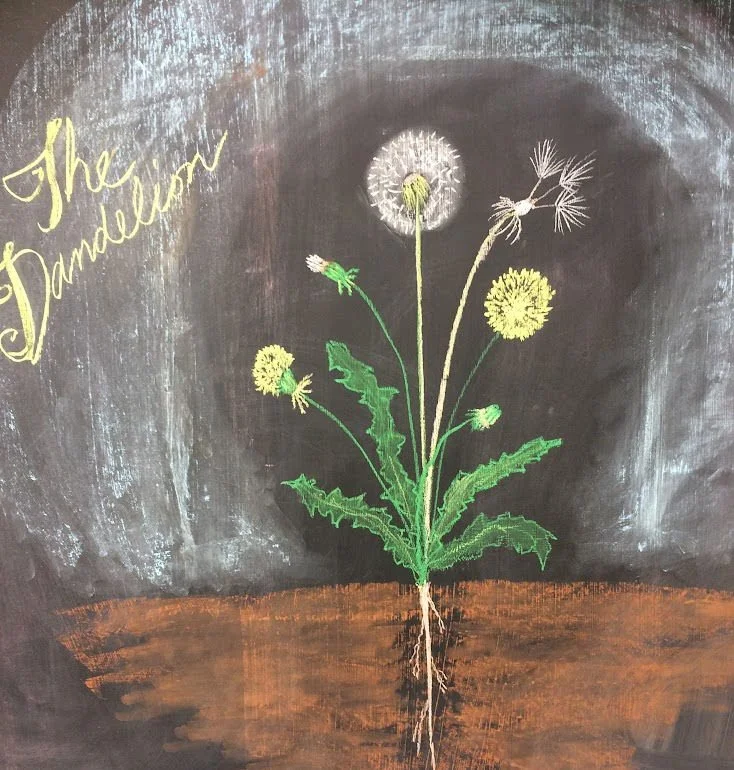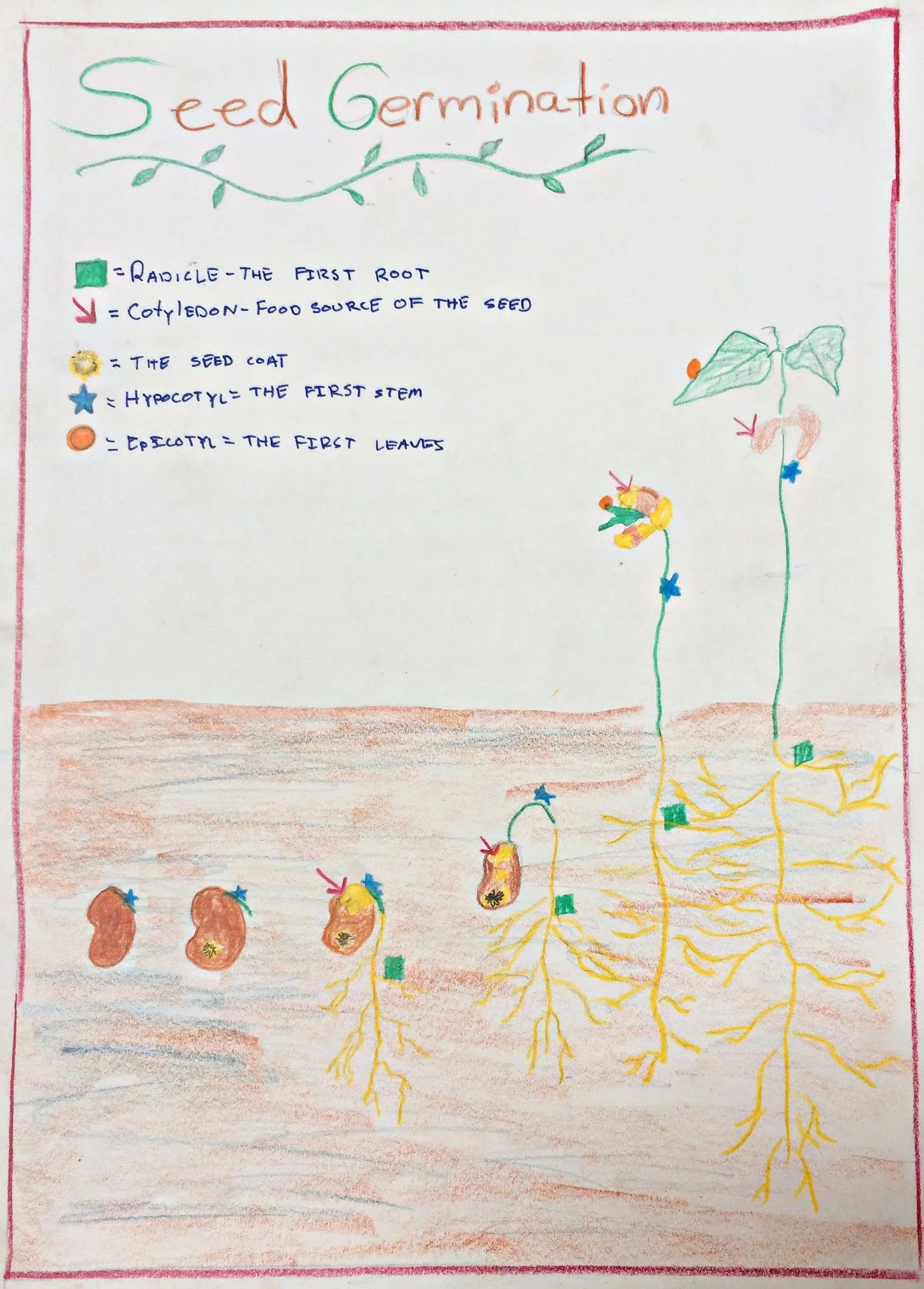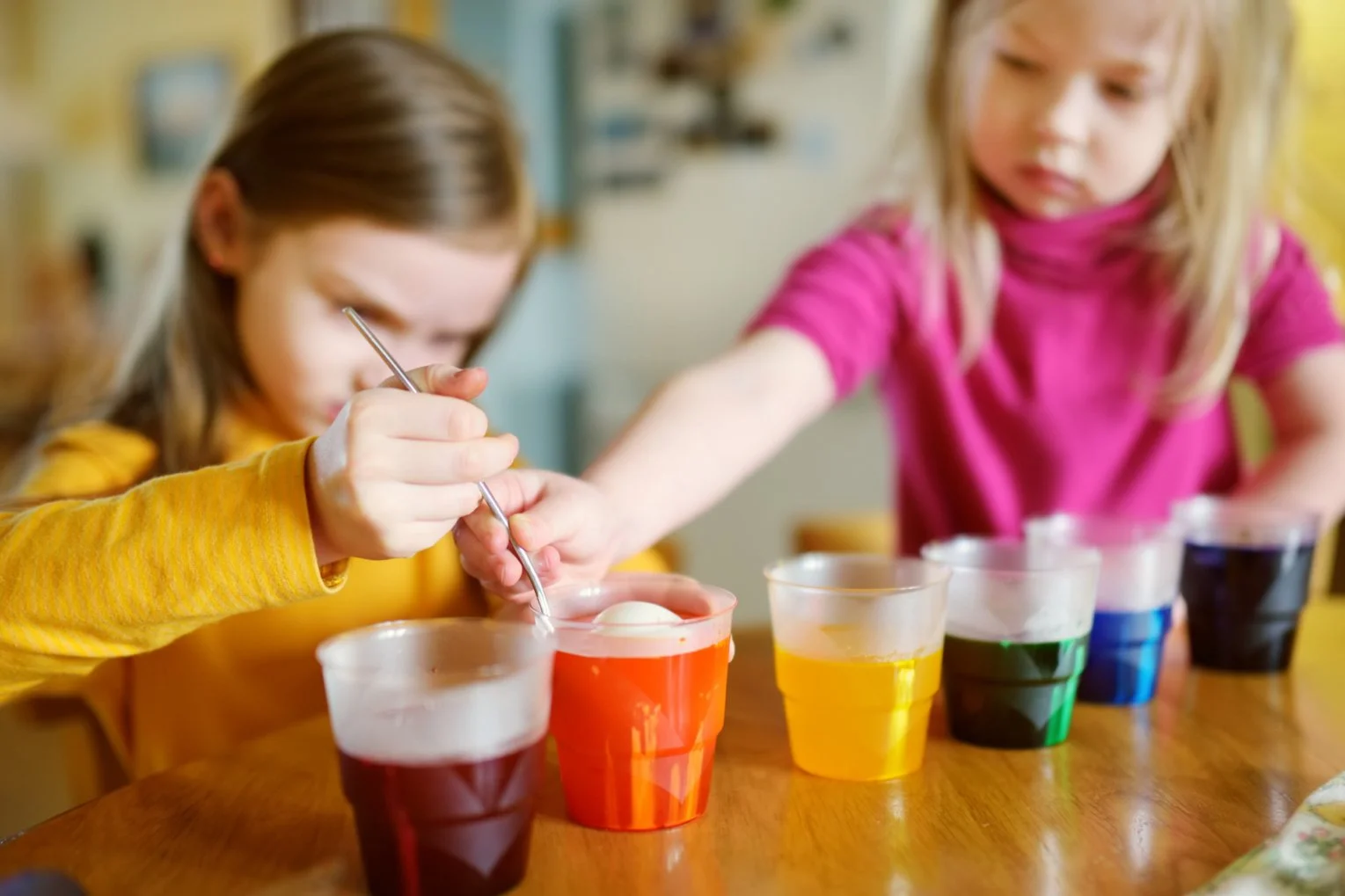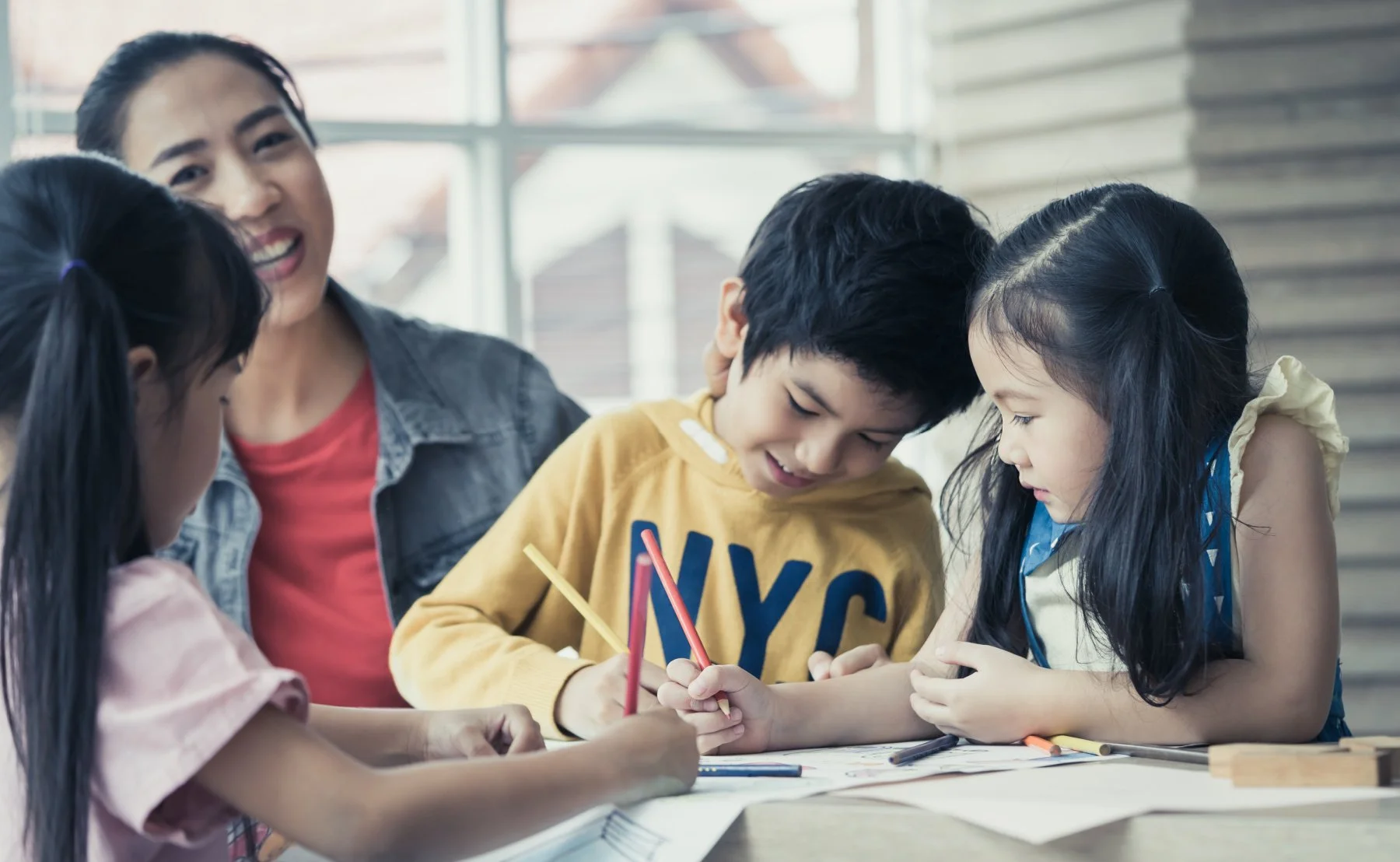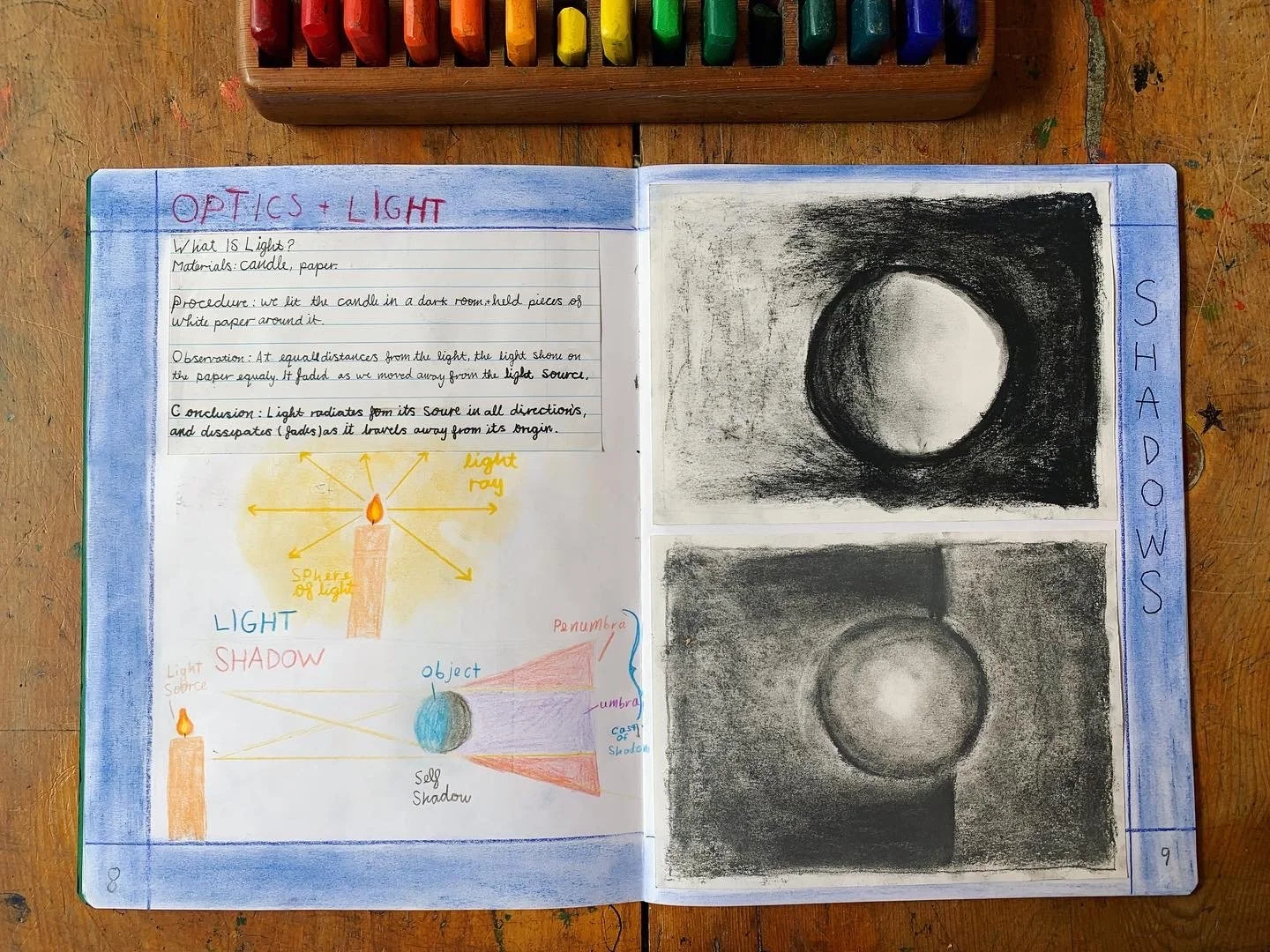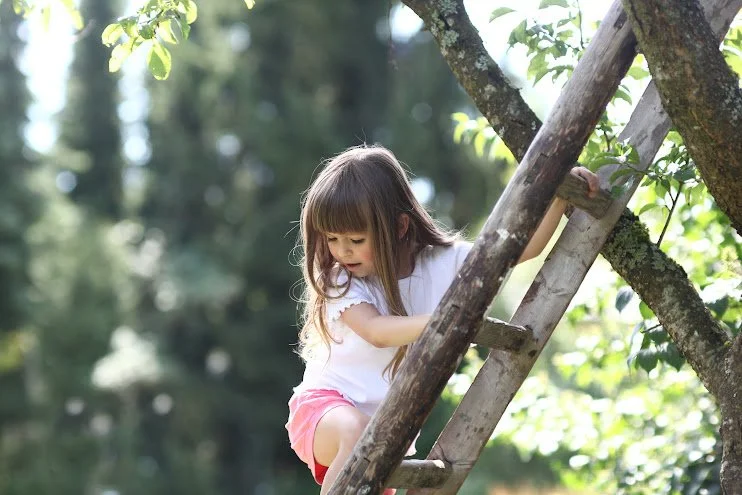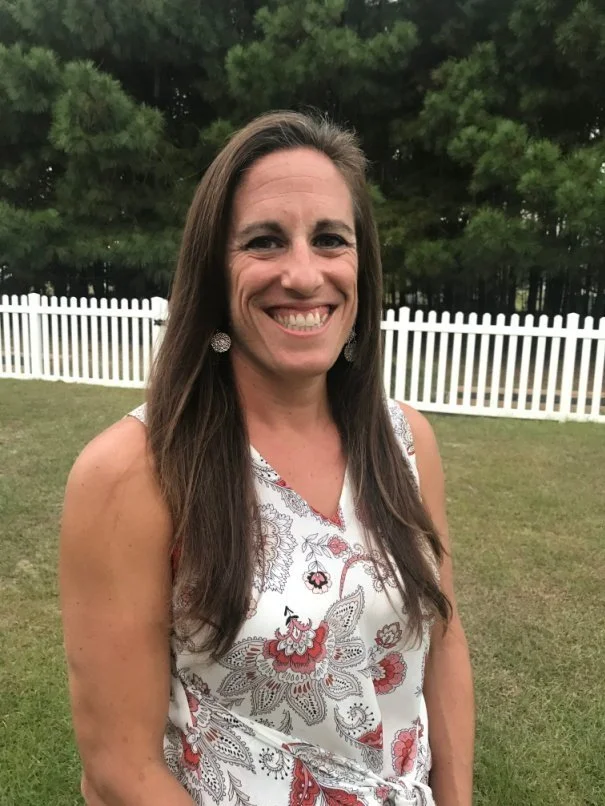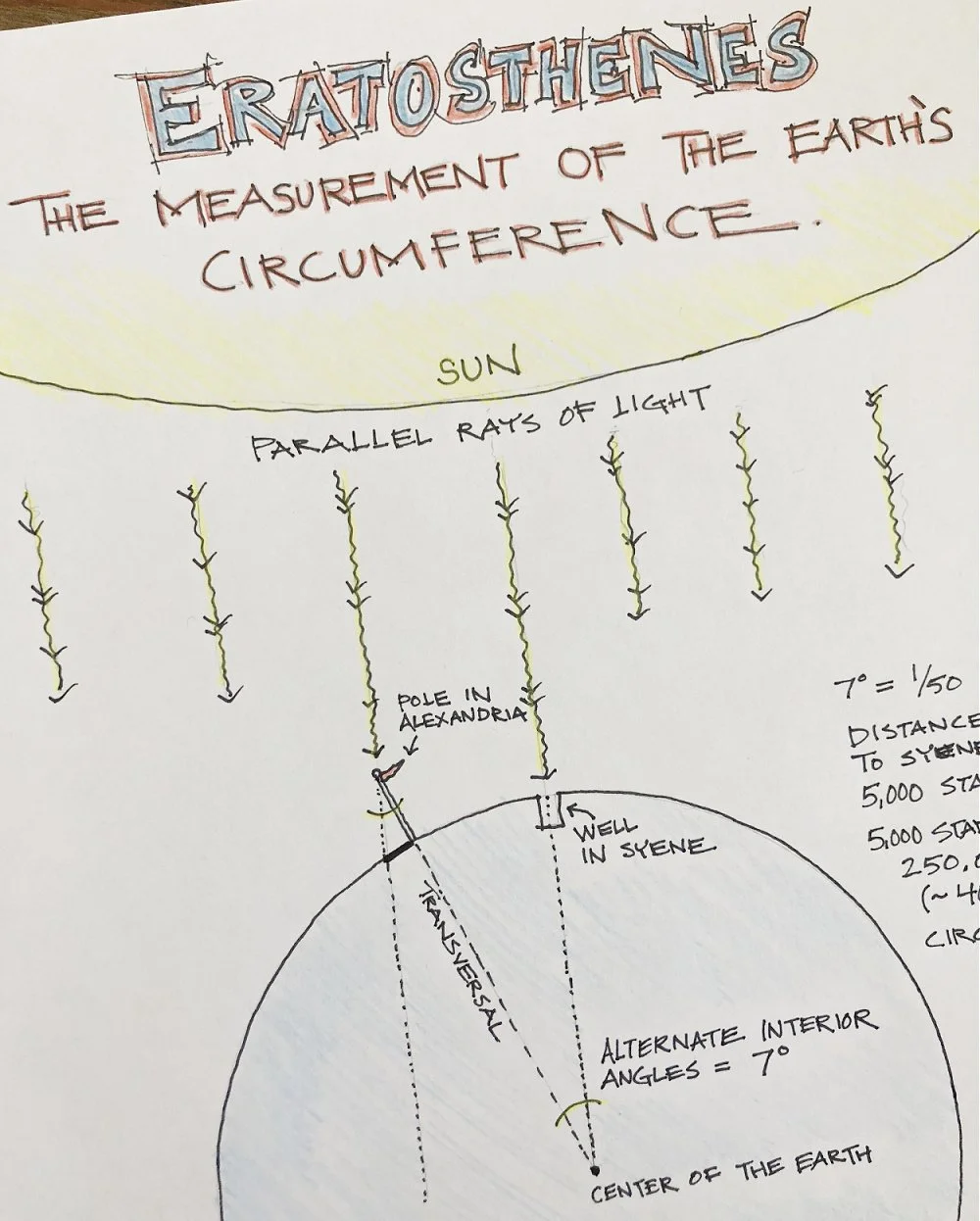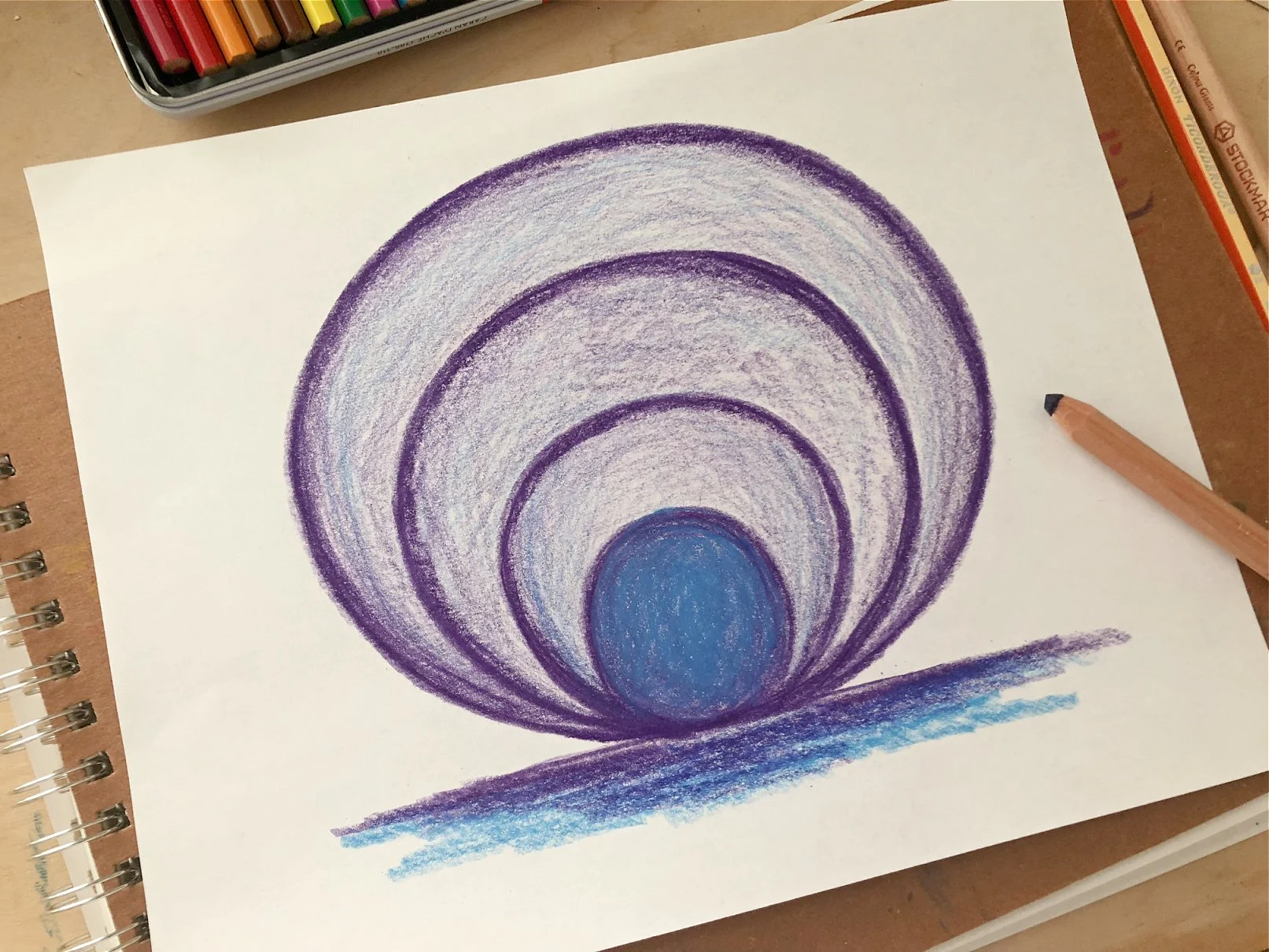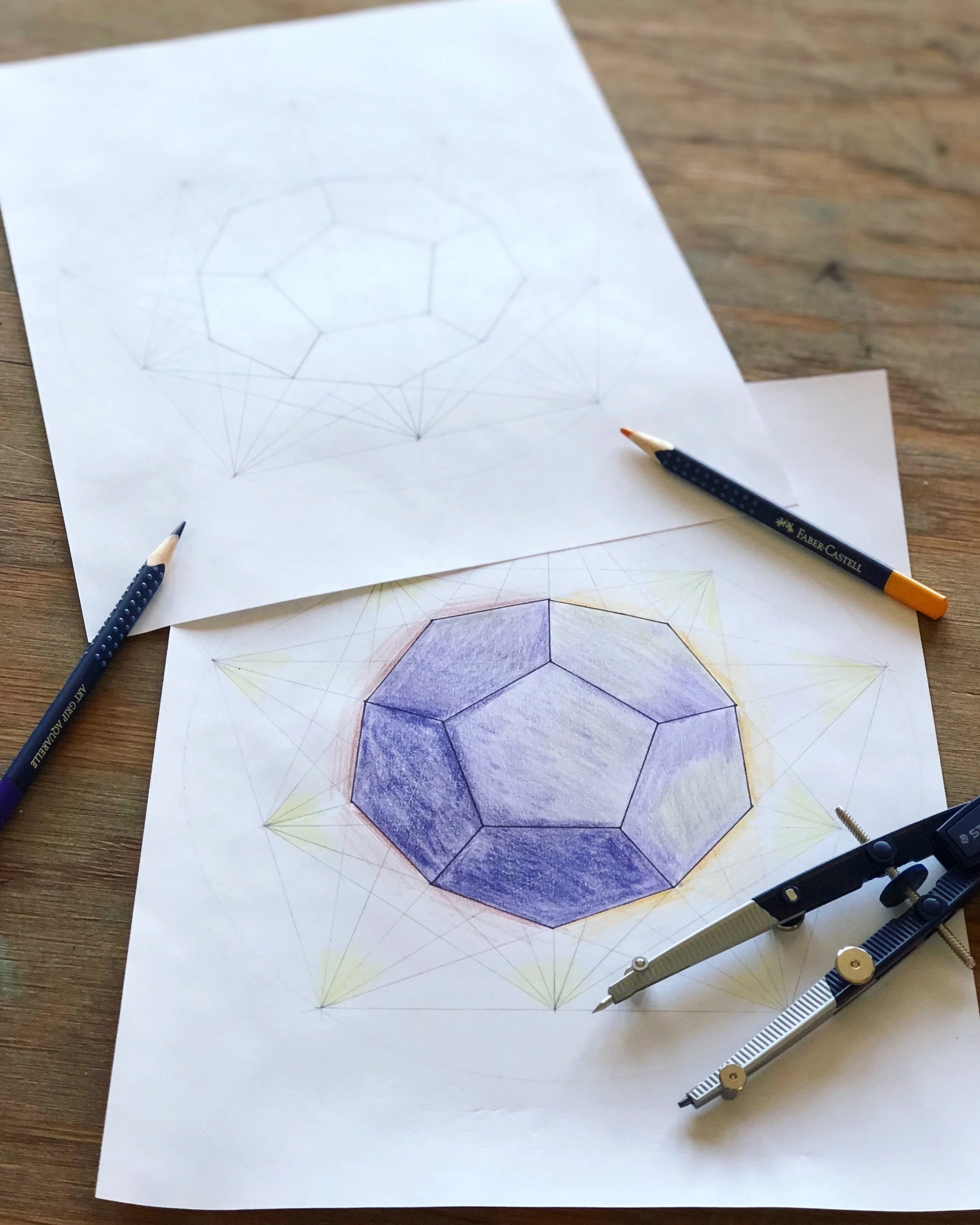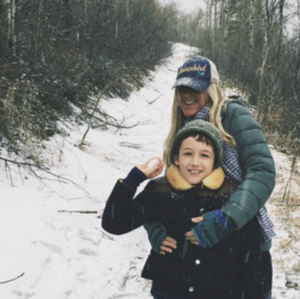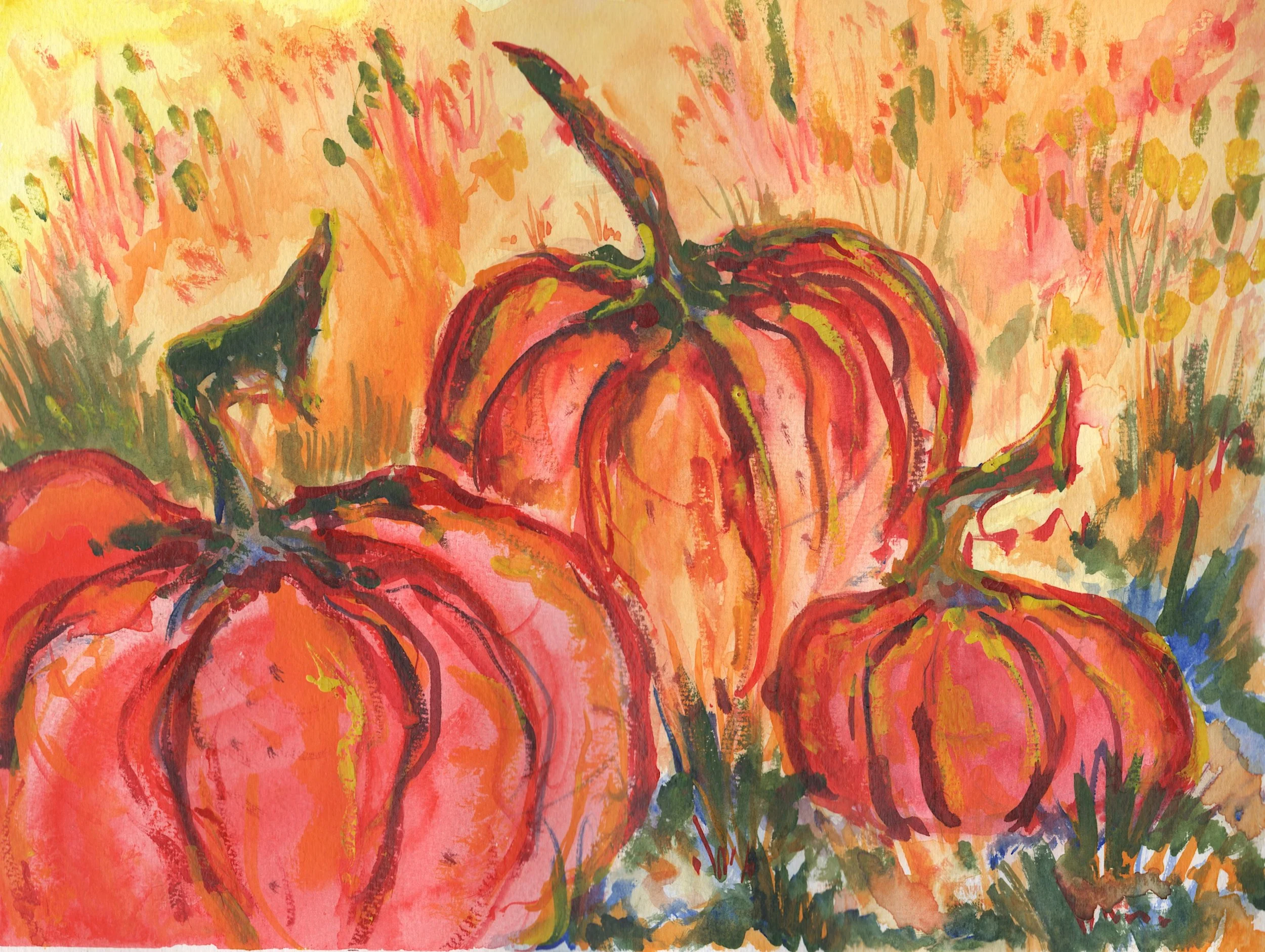
Waldorfish Blog
Waldorf Fifth Grade Botany: Growing with the Child
A fifth grade child is in a very interesting and important part of their development.
(Exciting news! Our Botany course is now open for enrollment! Click here to learn more!)
Students in this grade aren’t yet middle schoolers, and they also don’t feel as if they belong in the same space as a younger child anymore.
A fifth grader still has a sense of childlike wonder and imagination, but they are also beginning to gain interest in the more “realistic” world around them.
An educator’s chalk drawing of a dandelion, which is often studied in the first Botany block of the year.
I remember seeing my fifth graders out at recess near the beginning of the school year. They loved to play; skipping, laughing, playing “kitchen” with leaves and pine cones, searching for fairies in the garden.
At the end of the year, it was different. The students played more sports, especially with the older grade students , talked together in more private spaces, and complained about being “bored” (which always made me smile a little, what a teenager-y thing to say!)
This transition is bittersweet, but it is an important one.
I’ve found these two images to be helpful when thinking about a fifth grade child:
In one sense, they are coming down from the sky; the moon, the sun, stars and clouds, and finding their footing on earth. They are finding where they stand, and will work on finding a solid, confident footing throughout their pre-adolescent and teenage years (and beyond).
From trees, to plants and flowers, the Botany curriculum is vast and varied.
In a very real sense, the fifth grader is growing up, as if they were a seed breaking through the ground and beginning to sprout. In their younger years, a student is in the warm, safe care of their surroundings; they are being held, their potential still contained. But in this transitional year, they begin to sprout, grow, and stand on their own.
So, where does the curriculum come into this? (You knew we were going to tie this into the curriculum!) Among other subjects, we have one of the most important subjects of the year: Botany.
How does a seed grow to meet its fullest potential? What must it rely on to develop and grow? What happens when its needs aren’t met? What is its purpose, and how does it contribute to the health and well being of others in this world? What does it give, what does it take?
It may be hard to believe at first glance, but the botany curriculum really does ask and answer many (if not all) of these big questions in a subtle, yet impactful way, and the material grows with the child in a meaningful and purposeful way.
Let’s start at the beginning…
Traditionally, there are two botany blocks in the fifth grade, one in the fall and one in the spring (though of course, this varies from place to place).
Growth and change- a continuous theme through the Waldorf Botany blocks!
The first block begins in a soft, slow fashion. It is magical, and has a feel of mystery and wonder to it. Imagine a forest in a fairytale; one might find bright lichens clinging to the side of a shady tree, soft mosses where the princess rests, and algae that paints the running river with bright greens and blues. The teacher uses poetry, stories, and asks the students to use their senses as they study these special plants and fungi.
As the fifth grader is still in a more childlike and imaginative place, this first block meets them perfectly where they are in their development. Lichens and mosses rely on others, such as a sturdy tree trunk, to thrive and grow; just as the fifth grader is still more comfortable in the safe embrace of their imaginations and guidance of others.
The second botany block, usually done a few months later, shifts significantly in how the curriculum is presented, and what it includes. Trees and flowers are the main subjects studied, but in far more scientific detail than before.
Trees are now categorized into monocots and dicots by observing their different structures and characteristics; flowers are celebrated for their beauty, and also dissected carefully to identify their many parts, such as the petals, stigma, pistil, and more. The plants studied in this second block are far more independent in how they function, and have many individual features that make them unique and special in the vast plant world.
Botany main lesson book pages are an opportunity for students to show their own style, and illustrate what they’ve learned!
This is the developing fifth grader: ready to exercise more independence, beginning to discover themselves as individuals, and ready to enter a more realistic world.
As with all things in Waldorf education, the botany curriculum plays an important role in mirroring the development of the child. From its beginning, the botany blocks grow with the child. Starting with the plants that need a little more support and care from others, such as lichen clinging to tree branches, and ending with the independent, strong, and unique flower.
Simple to complex, dependence to more freedom, soft and magical to more formed and realistic. It’s all about growing up, and supporting the children to bloom into their best, most colorful and dynamic selves (botany pun intended!)
About the Authors
Robyn Beaufoy is Waldorfish’s CEO, and a course instructor for two of our courses - Waldorf Art for Beginners and Weekly Art Foundations. You’ll find her intuitive touches and influences throughout everything Waldorfish offers! Robyn has been in the world of education for almost 30 years, with an MA in Education and a certification in Waldorf teaching - she also homeschooled both of her children. In 2012 Robyn co-founded Waldorfish.com, creating it with the vision of making Waldorf inspired-art and pedagogy more accessible, joyful, and doable to homeschoolers all over the world.
Caitlin Amajor is Waldorfish’s course instructor for Geometry grades 5 & 6, and Botany, as well as our Administrative Assistant. From a young age, Caitlin has been immersed in Waldorf education, attending a Waldorf school from K-8. After receiving a BA in History, Caitlin gained her certification in Waldorf teaching, and spent seven years as a Waldorf class teacher in the upper grades. With a special fondness for watercolor painting and geometry, Caitlin loves bringing Waldorf education to her students all over the world, and seeing their own individuality and style bloom from the curriculum!
more on the blog…
Merging Occupational Therapy with Waldorf Homeschooling
Enjoy this special piece fromWaldorfish guest writer, Kristin Palen!
She’ll be looking at how to support your child using a Waldorf inspired, holistic learning approach from an occupational therapy perspective.
What is an Occupational Therapist?
An Occupational Therapist (OT) helps people of all ages participate in purposeful and meaningful activities through the therapeutic use of occupations. A child’s occupations are embedded in play!
Waldorf education and OT therapy agree: play is powerful!
Think of the developmental skills that encompass play: sensory processing, self regulation, sensory motor, executive functioning, perceptual motor, gross and fine motor skills. What are these skills essential for: effective learning!
OT is holistic, individualized and child centered - treating their mind, body and soul. OT utilizes evidence-based practices with assessment, clinical reasoning and task analysis to facilitate a child’s successful participation in their occupations by adapting, modifying, and enhancing the environment and task to foster independence.
Blending OT and Homeschooling
I truly love being an OT. The mix of science, human connection and thinking outside the box gets my creativity flowing!
When we first began homeschooling 7 years ago , I structured our day similar to an OT session. I developed a daily rhythm balancing calming with alerting multi sensory activities, attuning to my child’s needs. My child gravitated towards outdoor exploration, thus much of our day was spent outside encouraging open ended play. Our schedule was created with intention being cognizant of over stimulation. (By the way, if you’re wanting some support in your OWN homeschool planning, click here!)
Doesn’t this sound similar to Waldorf?
At the time, I had a basic understanding of Waldorf philosophy. When I dove into the foundations, I discovered rhythm was at the forefront and reaching the whole child through their head, heart and hands. This was what I was already naturally creating!
“OT and Waldorf Education seamlessly blend together in a harmonious manner using a holistic approach to facilitate connection, bonding, and creative exploration. ”
Steiner said it himself, “Where is the book in which the teacher can read about what teaching is? The child themselves are the book.” (Steiner, Rhythms of Learning). The beauty of homeschooling is curating and individualizing a curriculum for your child, which is the essence of OT!
Fast forward 5 years, I have two children ages 10 and 4 who I have been homeschooling using a Waldorf inspired approach, with added OT flare!
Play doesn’t need to be complicated- let your child be the guide!
So you might be wondering how this can help you if you are not an OT?
I will demonstrate how to utilize a holistic approach in your homeschooling rhythm to facilitate successful learning with four guiding principles to follow when devising your lesson plans. This will ensure that you are using a child centered approach to customize any curriculum specifically for your child.
Place connection at the forefront.
Waldorf homeschoolers are masters at holding the space. We attune to our child’s needs, creating flexibility in our rhythm. We adjust our presence to the ebb and flow of our child’s emotions enabling them to feel in control and connected. If we notice our child is resistant or withdrawing from a lesson it is our responsibility to investigate what is underlying the behavior. Then we can make adjustments to facilitate emotional regulation, which in turn will improve their overall engagement and interest.
Use interest led learning strategies.
Naturally weave your child’s interests directly into the lessons. Think about what is motivating, their passions, and what sparks their creativity; create lessons around those interests. Then they can be fully immersed and absorb the lesson. For example, my son is interested in woodworking. Our lessons incorporate this; our main lesson books may not be as filled as others, but he is motivated and participating in experiential learning activities.
Incorporate your child’s strengths.
Set up your child for success by gearing your lessons around your child’s strengths. What is their learning style; are they a kinesthetic, visual, or auditory learner, etc. and how can you utilize these strengths to optimize their engagement? Observe them closely and their sensory preferences. For example, decide if they are more inclined to seek out movement with kinesthetic activities, tactile (touch) input, visual demonstrations, or through auditory input with singing. If your child is more focused and attentive with specific sensory activities, make those a priority in your lessons.
Adapt the lesson and environment to your child’s needs.
Think about how you can adapt the environment and lessons to optimize your child’s learning. How can you structure your daily rhythm and lesson plans to support your child? Your child may benefit from shorter lessons throughout the day; they may be more regulated doing lessons outside; they may be more motivated if lessons involve playing games, adjust accordingly.
The emphasis above is to focus and connect with the child in front of you! Try not to get caught with what they “should” be doing, instead follow Steiner’s advice, meet them where they are, let that guide your lessons.
We want our children to feel connected with themselves, with us and their environment so they can be confident to let their minds soar. This instills the confidence to face challenging and unpredictable life experiences. If a child seems uninterested, reluctant, or bored with an activity, search for direction with the guiding principles above.
Try placing connection with your child at the forefront of your daily routine- you’ll be amazed at what comes!
“The basis of Waldorf Education is to create independent and creative thinkers. We want to be cognizant of the whole child by problem solving how to adapt, modify, customize and facilitate an experience that will empower our children to guide their lifelong learning! ”
Following these guiding principles will lead you in the direction of bringing meaning, purpose and joy to your child; my ultimate goal as an OT!
How to connect with Kristin:
Kristin Palen, OTR/L is homeschool mom and an occupational therapist with over 19 years of experience solely in pediatrics. Kristin is the owner of Coastal Connections Pediatric Therapy, in the Outer Banks North Carolina. Her practice provides direct nature based occupational therapy services, virtual parent coaching and masterclasses coming soon. Kristin’s areas of interest and specialty are sensory integration, emotional regulation, and nature based occupational therapy. Being part of a neurodiverse family Kristin particularly enjoys supporting and coaching fellow neurodiverse homeschool families to adapt, accommodate and meet the needs of their unique children.
Website: www.coastalconnectionsot.com
Waldorf Geometry: How it Meets the Sixth Grader
A running theme of the sixth grade Waldorf curriculum is the phrase “cause and effect.”
A twelve pointed circle becomes something beautiful with some color and shading!
Students at this age are ready to experience and observe more on their own than ever before, which is why we introduce the formal study of science, history, and more (and if you’re interested in learning more about the middle grades science, click here!)
My favorite subject to teach in sixth grade is geometry (not a big surprise to you, I’m sure!) It’s a block I look forward to, and deeply love, and not just because it speaks to me personally, but because I truly enjoy watching the transformation the materials create space for within the young middle schoolers.
The students have experienced geometry in fifth grade, so the subject isn’t completely new to them. They are familiar with the vocabulary, and have discovered and experienced the balance, symmetry, and beauty that freehand geometry provides.
In sixth grade, the geometry block brings a new experience for the student, and it's one that doesn’t always get the credit it deserves! But in my experience, it is perhaps the most important and developmentally appropriate block of sixth grade: it is all about cause and effect, the beauty of order, and the laws of nature.
So, how does the geometry curriculum reinforce the sixth grade theme of “cause and effect”?
If we’re constructing a six pointed form, the compass point must lay on the intended point as perfectly as possible. If it’s a little off, then the whole form will be a little unbalanced.
If we are constructing parallel lines and don’t use our straightedge accurately, then we simply won’t end up with parallel lines when we are done.
If we construct six equidistant points on a circle’s circumference, and connect them one by one with straight lines, then we’ll create a hexagon.
We include a string form lesson in our sixth grade geometry course!
Notice the “if….then…” wording?
If this, then that.
Rule, order, and natural consequences that exist without opinion or judgement- kind of perfect for a sixth grader, who probably feels judged often, unsure of where they stand in the world, and feels change all around them and in their physical body.
Truly feeling the reality of cause and effect, as well as the challenges and satisfaction that come with the experience of using tools and constructing complex forms, is deeply important for the student.
So what then is the significance of the next step, which is shading and using color to finish the final form?
This second step of using color and shading techniques, is a critical piece for the student to experience to truly get the benefits that this block provides. Now is the time to give them choice - what colors will they use? Bright, soft, bold, dark? Will the form be darker on the outer edges and get lighter as it moves in?
The choices are endless. When my students came to the point that a final form was ready to be finished with color, it never failed that the room would become quieter, students would arrange their pencils in possible color combinations, and careful, intentional work would begin. Beauty would begin to bloom around the classroom!
Student work displayed from a sixth grade classroom- every form and drawing is unique and beautiful!
Within the laws of nature, there is space for the beauty of the individual.
Isn’t that amazing, and so important for an-almost-teenager to experience?
For a sixth grader (or perhaps everyone?) it is important to hear and experience the comfort and structure that comes with knowing the laws of nature. We can count on these truths, and know that they will not waver, no matter how chaotic the world may seem. And within these laws, there is space for one to create beauty, and express their individuality in important and impactful ways.
I know these are big and lofty things to say about just one 3 or 4 week block, but I don’t say them lightly!
Geometry really is that powerful, meaningful, and just plain amazing.
Bring your homeschool curriculum to the place where art meets math! Our courses for grades 5-8 provide a full year’s worth of curriculum, instructor support, step-by-step instructions, and so much more.
About the Author
Caitlin Amajor taught in the Waldorf middle school for seven years, and was also a Waldorf student herself! She currently works as an administrative assistant for Waldorfish, and is also the instructor for the grades 5 and 6 geometry courses. Caitlin enjoys baking, gardening, and spending time with friends and family.
Celebrating Waldorf Festivals with Teens: A Time for Changing Roles
Festival life is the heartbeat of Waldorf Education.
Festivals as practiced in Steiner schools and homeschools are linked to larger rhythms in the natural world, the meanings of which have been interpreted over time and passed down along cultural and generational lines.
The youngest of Waldorf students are so earnest in their participation in these rituals. But what happens as our children reach their teens?
Do we give up on festival life and hope that they remember these early days and ways of relating to the world, researching them on their own when they are adults?
Festivals can be a family affair, for a wide range of ages!
Maybe. But perhaps there is another way.
My son’s earliest memories of Waldorf festivals are from the brick-and-mortar school he attended between the ages of 3-7. Of that period of time he shares:
“I always had a lot of fun. Advent was one of my favorites, I loved the spiral. I also liked the May Faire and the May Pole, seeing all the patterns get braided…those are the two I remember the most.
On Candlemas our teacher gave us two strings with metal nuts tied to the ends. We’d line up next to a big basin full of melted wax, and take turns dipping, walking in a circle over and over until we had full-sized candles.
In Kindergarten, on Santa Lucia Day, an 8th grade girl came through our classroom with lit candles in a wreath on her head with all the second graders following her, singing. I enjoyed that festival.”
(At this point he begins humming the song associated with Santa Lucia: “Santa Lucia, Thy Light Is Burning…”)
Simple, meaningful work makes festivals special and enriching for the whole family.
Beauty and ritual make an impression on the soul – he is now 13.
What stands out to me through the soft focus of memory is the anticipation of seasons: color, a return to the same rituals year after year, a sense of time passing and miles traveled along with the safety of a return to a spiritual home base.
Festivals have the power to connect us to one another and the natural world in ways that supersede language. We feel the magic of the Mystery to which most all spiritual disciplines point as our genesis.
The wonder inherent in these festivals is very easy to communicate to young children non-verbally, because their experience of the world does not shift to the intellectual sphere until late childhood.
“The third seven-year phase of childhood is one in which thinking prevails…[the] capacity for critical thinking shows itself in a pronounced way with the onset of adolescence and particularly at the beginning of high school. ”
I have found that if I am subtle about the approach to festival life, my son is more than happy to participate in the rituals that defined his younger years. From reading stories to activities such as baking bread, making candles, crafting floral arrangements and doing art, we always seem to find common ground related to a feast day.
This past February, to acknowledge Imbolc (the calendar day between the Winter Solstice and the Spring Equinox) we made beeswax candles, but not before an -- awkward, truthfully -- exchange about how to approach the related story from “A Festival Year”.
I began to read it aloud, and immediately felt self-conscious. I subsequently handed it to my son, who then began reading it silently to himself. Suddenly, he stopped and looked up at me. As if reading his mind, I smiled and said, “You want me to read it.”
“I do,” he replied.
So I did.
At the end of the tale, which was listened to with this whole being, he told me that he still loves hearing stories in my voice.
A final thought, about families with multiple children: festival days are a great way to give the older kids an opportunity to teach the younger ones.
How can your teenager take on more of an active role in your family’s festival life?
Menu, craft, and activity planning are all aspects of festival life in Waldorf education that need attending to. Our experience has been that they LOVE being tasked with helping to bring the festival to the younger children. This shifting of roles helps to re-awaken what’s already living inside them.
Ask them what they love most or remember the most vividly from past years, and be sure to include those elements. Remember that children in the middle grades may land somewhere between wanting to participate without doing the planning, and taking the lead on doing the planning themselves.
This is developmentally appropriate, there is no one-size-fits-all approach.
The most important aspect of festival life is to remain curious and open to the spirit of the season, trust that it will speak through your family, and above all, enjoy it.
*Cue Celebration, by Kool and the Gang*
Cristina Havel lives in Southern California where she and her husband have worked together for nearly 2 decades. They homeschool their son using the Waldorf pedagogy as a guide and believe in the transformative powers of art and nature.
Looking for something?
Welcome to Waldorfish! We started this adventure in 2012 out of a desire to make Waldorf training more accessible to class teachers in remote locations and to homeschooling families everywhere! Read more, click here.
WE WON! Our Weekly Art courses were voted “best interactive art program.” Learn more about the award, here.
A few of our most popular blog posts:

